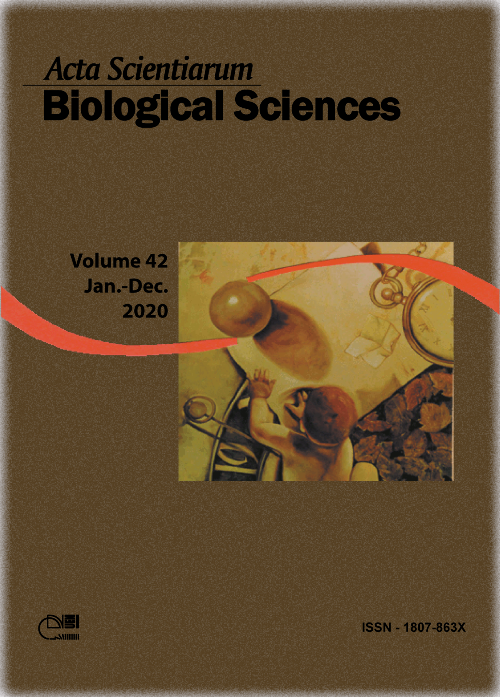Genetic diversity and population structure of mangabeira (Hancornia speciosa) estimated using ISSR markers
Abstract
The mangabeira is a native fruit tree from Brazil with fruits that present significant potential for exploitation. This species is experiencing genetic erosion, which increases the importance of elucidating the genetic diversity that exists in mangabeira populations to support conservation programs. Thus, this study aimed to evaluate the diversity and genetic structure of mangabeira populations from the Germplasm Bank of Embrapa Meio-Norte using inter simple sequence repeat (ISSR) markers. A total of 29 accessions from Brazil were characterized, including one from Sergipe, one from Bahia, three from the Distrito Federal, 11 from Piauí and 13 from Paraíba. The 11 ISSR primers provided 166 loci, among which 120 were polymorphic. The analysis of molecular variance (AMOVA) indicated that 69.66% of the observed genetic variability occurred within populations and that the populations showed high genetic differentiation. The results obtained from the STRUCTURE analysis indicated the existence of two genetic groups. The Nei and Shannon indices of genetic diversity varied from 0.15 to 0.24 and from 0.22 to 0.34, respectively. The coefficient of similarity ranged from 0.57 to 0.94, with a mean of 0.76. The mean was used as the cut-off point in the dendrogram, and seven groups were identified. In conclusion, this study demonstrates the presence of low or moderate genetic diversity within the studied mangabeira populations and high genetic differentiation between the populations. The results indicate a need to increase the number of mangabeira population samples from different collection sites as a strategy to achieve more significant results for the conservation and genetic improvement of this species.
Downloads
DECLARATION OF ORIGINALITY AND COPYRIGHTS
I Declare that current article is original and has not been submitted for publication, in part or in whole, to any other national or international journal.
The copyrights belong exclusively to the authors. Published content is licensed under Creative Commons Attribution 4.0 (CC BY 4.0) guidelines, which allows sharing (copy and distribution of the material in any medium or format) and adaptation (remix, transform, and build upon the material) for any purpose, even commercially, under the terms of attribution.
Read this link for further information on how to use CC BY 4.0 properly.












1.png)




3.png)













